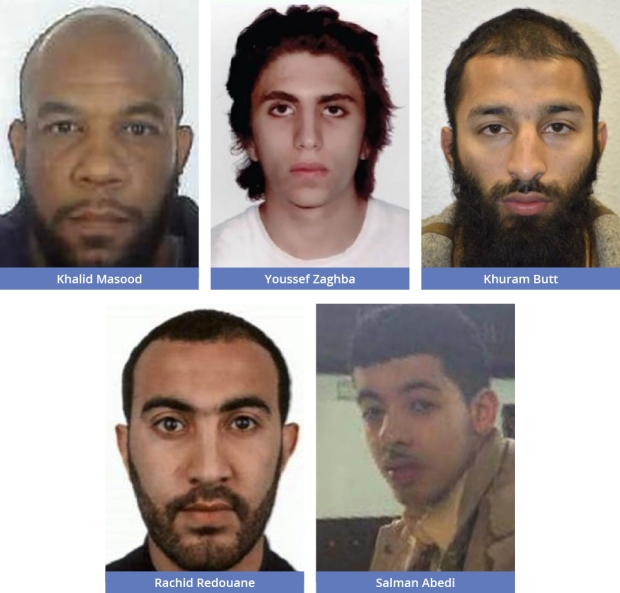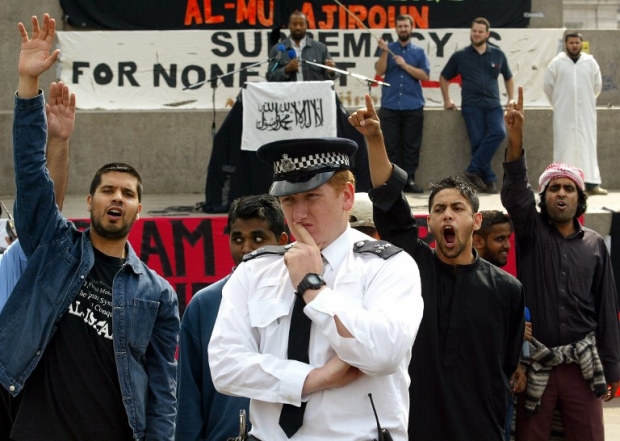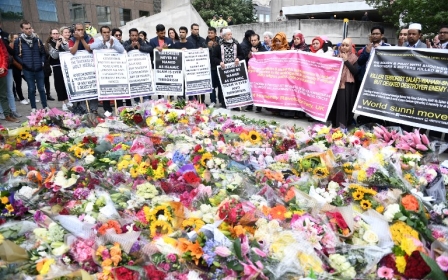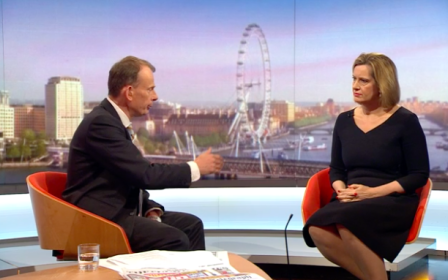Lone wolves, misfits and drifters: The new profile of British terrorists
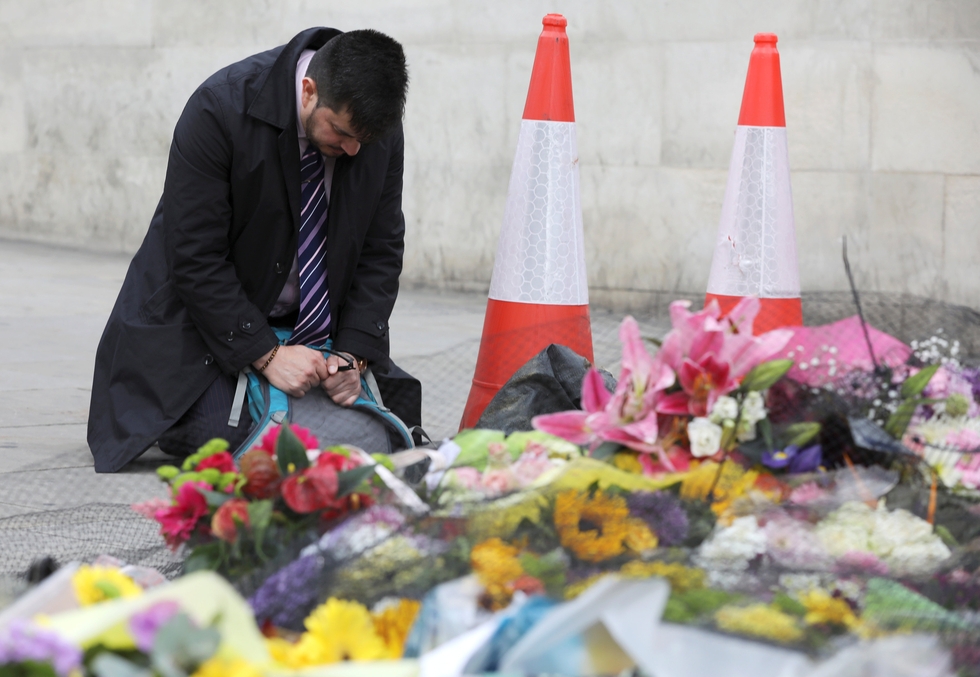
The terror attack that began on London Bridge and ended in Borough Market during the evening of 3 June, once again served as a stark reminder of the threats that Britain faces from terrorism.
Underscoring that reality is that Britain has now sustained four substantial terror attacks (Westminster, Manchester, London Bridge and Finsbury Park) in just 11 weeks.
My suspicion is that it is more likely that Butt and his accomplices acted independently rather than being influenced by al-Muhajiroun to carry out the attack
Although the first three attacks were each committed by "Islamic" militants, the backstories of the attackers are all different – and, particularly in the case of the London Bridge assailants, are worth a nuanced exploration to improve both the UK’s counter-terrorism strategies and the public’s understanding of the dynamics behind these attacks.
The Westminster attacker, Khalid Masood, was by all accounts off the radar of the police and security services. Although he drew the attention of the authorities several years before, their interest in him at the time was ancillary at best. More perplexing is that he left no trail whatsoever of his intentions; he didn’t speak to anyone, didn’t visit any websites, and was not considered dangerous in any way. He epitomises the notion of a lone-wolf terrorist.
Misfits
The Manchester bomber, Salman Abedi, was described as impressionable and easily manipulated. His father was a close friend of Abu Qatada, someone reportedly close to al-Qaeda, and there are reports that Abedi was an associate of a key Islamic State recruiter.
Those details are still being substantiated by the authorities, but what is known is that those around Abedi grew concerned and called the authorities after he commented that being a suicide bomber was acceptable.
The London Bridge-Borough Market attackers - Youssef Zaghba, Khuram Butt and Rachid Redouane - fall somewhere in between. Zaghba was known to authorities after being stopped while trying to travel to Syria and reportedly making the statement “I am going to be a terrorist”. Unlike Zaghba, Redouane was "under the radar" as far as the authorities were concerned.
Butt, on the other hand, had been a person of interest to the authorities after he was recognised associating with known al-Muhajiroun (ALM) followers in the Channel 4 documentary The Jihadis Next Door. Butt was also found to have attended at least one of the protests organised by ALM and there are reports saying that individuals who knew him reported their concerns to the police.
Unfounded claims
The reporting on Butt quickly morphed into assertions that Butt and Anjem Choudary - a senior figure in ALM since its formation in 1996 - were close, that Butt was a leader in the group, and that Butt’s actions were typical of ALM.
But as an academic who has studied this group intently for the past six years and knows most of those associated with it, has attended countless protests and dozens of their halaqah (study) sessions, interacted with them online and done extensive interviews with key leaders and ALM supporters, I think there is another possibility about Butt's relationship with ALM that is worth considering.
ALM believe that a "Covenant of Security" exists in Britain, meaning that the life and property of non-Muslims will be protected
Despite my interaction with the ALM group over the years, I never came across Butt at any of the protests, halaqah sessions, online forums, or saw him in any of the myriad of videos produced by the group or its franchisees, nor was he ever mentioned by anyone I interviewed.
It is entirely possible that I simply missed him, but after he was identified, I was told by others that although he was seen occasionally at protests, he was not a regular follower. Also pertinent is that Butt’s accomplices were not associated with ALM.
Another piece of the puzzle can be found in ALM ideology. For those that embrace ALM ideology, there are certain responsibilities and expectations. In brief, ALM ideology is predicated on several fundamental principles: the concept of Tawhid (the oneness of God); practising the five pillars of Islam; the Qur’an and Hadith are immutable and should be taken literally; followers are expected to practise al wala wal bara (embrace what is pleasing to Allah and distance themselves from what is displeasing to Allah); and last, to enjoin what is good and speak out about what is evil (a practice closely related to al wala wal bara).
In my interviews with Omar Bakri Mohammed, the founder of ALM, he has confirmed that he expects his followers to practise their faith in three ways: “conviction in the heart, testified by the tongue, and practised willingly by the limbs”. That is why they protest, engage in dawah (proselytising), and run a vibrant halaqah system.
In return for their ability to do those things, they believe that a "Covenant of Security" exists in Britain, meaning that the life and property of non-Muslims will be protected. In other words, in Britain, they see their struggle as non-violent and intellectual.
Drifters
Despite the knee-jerk reaction associating ALM to various terror attacks in Britain and in Europe, the reality is that those closest to the ideological principles abide by them and believe that a covenant of security does exist. That notion was routinely reinforced even after the Islamic State came to power.
Following the September 2014 fatwa from IS spokesman Abu Mohammed al-Adnani which called for attacks against the West, I queried group leaders that I knew privately accepted IS as a legitimate caliphate. Their assessment was that nothing had changed in Britain: the covenant still prevailed.
Countless individuals attend the al-Muhajiroun protests or study sessions, and then drift off
Choudary was convicted last summer for supporting IS after posting YouTube videos in which he assessed IS as a legitimate entity. However, he firmly stated in the videos that, although IS was a legitimate political entity in his estimation, individuals should not emigrate or take up arms in Britain as IS propaganda suggested.
Returning to the case of Butt, it’s important to understand that groups such as ALM are very porous entities. Countless individuals attend the protests or halaqah sessions, and then drift off.
The case of Butt and his two accomplices seems very similar to the case of Mohammed Chowdhury et al, nine individuals convicted of planning to blow up the London Stock Exchange in 2010. Chowdhury, like Butt, attended some of the ALM protests and halaqah sessions.
Following his arrest, he was quickly linked to Choudary and the broader ALM network. During the sentencing, a recap of the evidence confirmed that Chowdhury and his co-conspirators had a casual association with ALM.
More interesting though is that they engaged in several significant debates about whether a covenant of security as proposed by OBM actually existed. In the end, they concluded that it did not.
Complicating cause and effect
My suspicion is that it is more likely that Butt and his accomplices acted independently rather than being influenced by ALM to carry out the attack. That is not a vindication of ALM or Choudary, but does bring into question what influence he has and to what effect it has on those that engage in violence in the UK.
It also provides a more viable explanation for the three recent attacks and suggests that the threat of violence in Britain is more amorphous than is being reported by government, the media, some academics, and certain right-wing think tanks.
Thus, more attacks will likely happen in the future and the challenge for the police and security services to intervene successfully should not be underestimated, regardless of the legislative actions undertaken by government.
Finally, it once again raises referential questions about radicalism and its role in violent action, and what steps are necessary to build a more effective counter-terrorism strategy.
- Dr Douglas Weeks specialises in radicalisation processes and counter-terrorism policy. His research has broadly centred on the convergence of counter-terror policy, delivered by public safety agencies, and how mainstream and radicalised individuals respond. Before entering academia he spent 29 years as a career firefighter and served as his city’s Terrorism Coordinator from 1996 until his retirement in 2009.
The views expressed in this article belong to the author and do not necessarily reflect the editorial policy of Middle East Eye.
Photo: A man reacts next to floral tributes for the victims of the attack on London Bridge and Borough Market near the scene of the attack, London, Britain June 6, 2017. (Reuters)
New MEE newsletter: Jerusalem Dispatch
Sign up to get the latest insights and analysis on Israel-Palestine, alongside Turkey Unpacked and other MEE newsletters
Middle East Eye delivers independent and unrivalled coverage and analysis of the Middle East, North Africa and beyond. To learn more about republishing this content and the associated fees, please fill out this form. More about MEE can be found here.



